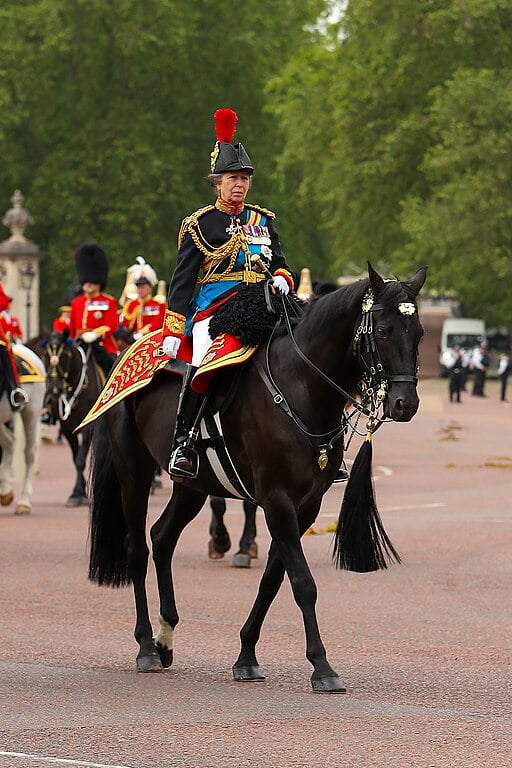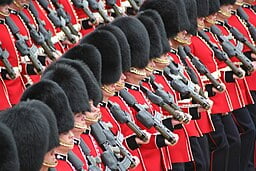The Trooping of the Colour: A Centuries-Old Tradition Steeped in Symbolism




The Trooping of the Colour is a grand military parade that has marked the official birthday of the British Sovereign for over 260 years. This time-honored tradition traces its roots back to the 17th century when Charles II was on the throne, and the monarchy was in full propaganda mode.Originally, the “Colours” referred to the brightly-colored flags representing different regiments in the British Army. These flags served as rallying points for soldiers during battles, helping them identify their units amidst the chaos. To ensure every soldier recognized their regiment’s Colours, officers would march up and down the ranks, waving the flags – a practice known as “trooping the colour.”. Over time, the Regimental Colour evolved into a revered symbol, its embroidered folds becoming a memorial to fallen comrades. The ceremony of Trooping the Colour was a way to familiarize soldiers with their unit’s Colours and ensure they knew their assembly point, especially when stationed in unfamiliar towns.
A Spectacular Display of Military Precision
Today, the Trooping of the Colour is a grand spectacle involving over 1,400 guardsmen, 200 horses, and 400 musicians. The parade features the Household Division, the Queen’s personal troops, who march in immaculate uniforms adorned with bearskins and scarlet coats – a symbol of Britain recognized worldwide. The ceremony begins with the Queen parading from Buckingham Palace to Horse Guards Parade, accompanied by members of the Royal Family on horseback and in carriages. Upon arrival, she is greeted with a royal salute and inspects her troops. The highlight of the event is when a different regiment’s Colours are trooped each year, with the soldiers marching in perfect unison, showcasing their discipline and precision. After the parade, the Queen rides back to Buckingham Palace, and the display concludes with a Royal Air Force fly-past, watched by the Royal Family from the palace balcony. Trooping the Colour in 2024.
In 2024, the Colours of the 1st Battalion Grenadier Guards will be trooped during the ceremony.The Grenadier Guards are one of the oldest and most prestigious regiments in the British Army, with a rich history dating back to 1656.The role of the Gold and Silver Sticks is an important part of the ceremony. The Gold Stick in Waiting is a senior officer who accompanies the Sovereign and carries a gold-tipped stick as a symbol of their authority. The Silver Stick in Waiting is a member of the Household Cavalry who carries a silver-tipped stick and is responsible for maintaining order during the parade. The specific individuals who will serve as the Gold and Silver Sticks in 2024 have not been announced yet.As the tradition continues, the Trooping of the Colour in 2024 is expected to be a grand affair, with all the pomp and circumstance that has become synonymous with this event. The parade will undoubtedly feature the same meticulous attention to detail and military precision that has made it a beloved spectacle for centuries.The Trooping of the Colour is not just a display of military might; it is a living embodiment of British history and tradition, a celebration of the monarchy, and a reminder of the sacrifices made by those who have served their nation. As the years go by, this centuries-old ceremony continues to captivate audiences worldwide, preserving the rich heritage and symbolism that have made it an enduring part of British culture.
Sources:
http://www.trooping-the-colour.co.uk/trooping/history.htm
https://www.householddivision.org.uk/trooping-the-colour-origins
https://www.blacktaxitourlondon.com/blog/the-trooping-of-the-colour-explained
https://www.lookandlearn.com/blog/24868/trooping-the-colour-has-a-long-and-sombre-history/
https://www.army.mod.uk/news-and-events/news/2023/06/what-is-trooping-the-colour/




Leave a Reply
Want to join the discussion?Feel free to contribute!